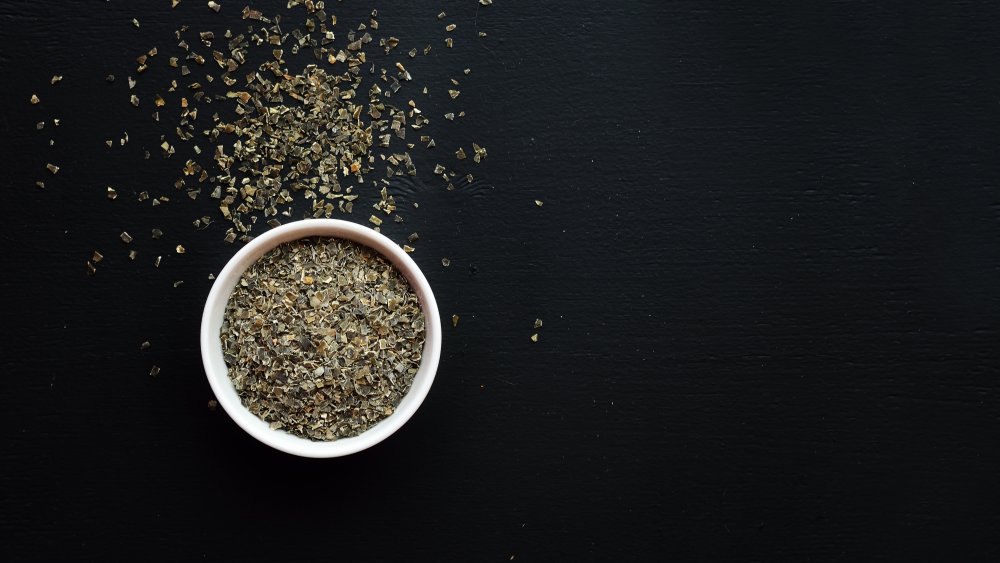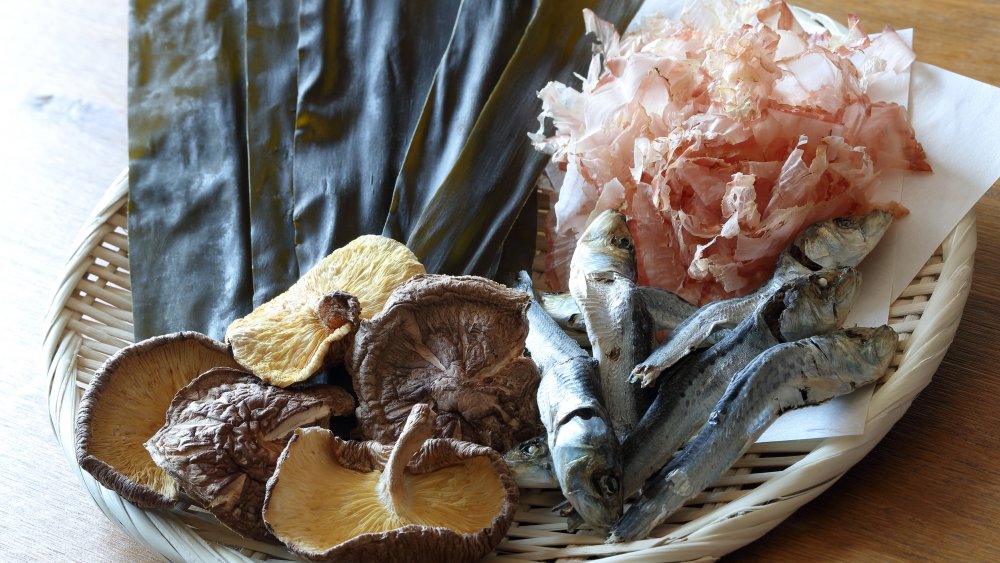The Truth About Dashi Powder
If you've ever attempted to make authentic Japanese cuisine, you've probably seen a recipe that calls for dashi, a seaweed-based fish broth. According to Serious Eats, the savory broth is a staple as a cooking liquid. It has a role much like chicken, vegetable, or beef stocks do in western cooking. It's used to make well-known dishes like miso soup and can even be used in place of water to make rice that's flavorful as a solo dish.
However, if you don't live near an easily-accessible Asian grocery store, don't have hours of free time to devote to keeping an eye on a simmering batch, or if you're simply new to the repertoire, you likely don't have a supply of freshly-made dashi on hand, which is where dashi powder can definitely come in handy.
Instant dashi powder's ingredients make it versatile
Almost all "standard" instant dashi powder has dried bonito flakes, kelp, and MSG (via Just One Cookbook), though some will use anchovies instead of bonito for the signature fish flavor. You can also purchase vegetarian dashi powder — look for kombu (kelp) or shiitake on the label — and dashi powder that's additive-free and won't have monosodium glutamate, or MSG. According to Serious Eats, that's a big part of what's responsible for dashi's signature umami — or savory — flavor, so take some time to dispel some common MSG myths if you're feeling hesitant about it.
Once you've purchased your instant dashi powder, you can use it, well, for almost anything. It can be mixed into water for the liquid used in okonomiyaki, cooking the rice for onigiri, or making a hotpot base for shabu shabu. You'll be able to make all kinds of incredible Japanese dishes in much less time than if you made your dashi from scratch — so why not add some to your pantry soon?

